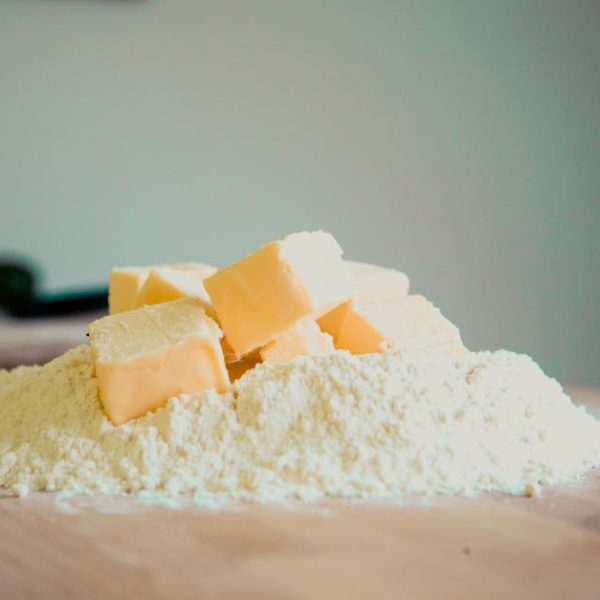Freezing salad dressing is not only a great way to reduce waste but also an opportunity to always have your favorite flavors on hand. Additionally, it ensures you are taking full advantage of the sales when your preferred brand is discounted. However, preserving the taste and texture of your salad dressing requires some specific methods. This article will guide you through the aspects of freezing and using salad dressings to help you avoid common pitfalls and maintain the quality of your condiments.
Understanding Different Types of Salad Dressings
Salad dressings come in a wide variety, and they can broadly be categorized into oil-based and cream-based ones. The type of salad dressing greatly influences its ability to freeze, thaw, and retain its desired texture and flavor.
Oil-Based Dressings
Usually, oil-based dressings consist of ingredients like vinegar and herbs mixed in with oil. They freeze relatively well, but the oil and vinegar may separate during the process, requiring a vigorous shake or stir before using post-thaw.
Cream-Based Dressings
On the other hand, cream-based dressings – like ranch or blue cheese – contain dairy products. While these can be frozen, drastic texture changes are often experienced during thawing. These might result in a less appealing consistency, though the taste generally remains unaffected.
Pros and Cons of Freezing Salad Dressing
- Pros: Allowing for bulk purchases; increasing shelf-life; preserving flavor.
- Cons: Possible texture changes; separation of ingredients.
Preparation Procedures before Freezing Salad Dressings
Before freezing, consider the type of container to be used. Plastic containers or jars work best. Glass containers are also usable but remember not to fill to the brim as the dressing will expand as it freezes and it could cause breakage.
Pro Tip: Remember to label containers with the date of freezing. This will help you consume them within their best quality period.
Freezing salad dressing is not just about pouring it into a container and sticking it in the freezer. To prepare salad dressings for freezing:
- Shake the dressing well to ensure all the ingredients are well mixed.
- Fill it into the chosen containers, leaving about 1-2 inch of space to allow for expansion as the salad dressing freezes.
- Ensure that the container’s lid is on snugly to prevent any potential freezer burn or alteration in flavor from other items in the freezer.
- Finally, place these containers at the very back of the freezer where the temperature is coldest and most constant.
Wrap your dressing containers in a freezer bag for an added layer of protection against the risk of accidental spillage in your freezer.
Freezing Process for Salad Dressings
Freezing salad dressings is a pretty straightforward process. Here’s a four-step guide to ensuring your dressings are frozen correctly.
Step-by-Step Freezing Procedure:
- Shake the salad dressing well to mix up all the ingredients.
- Pour the salad dressing into the suitable container, remembering to leave some space for expansion.
- Secure the lid tightly to maintain the flavor and prevent freezer burn.
- Place the container in the coldest part of your freezer to freeze.
In terms of the ideal timeframe, salad dressings can be frozen for up to six months for optimal flavor. However, they can generally stay in the freezer indefinitely and still be safe to eat as long as they remained frozen.
Checklist for Freezing Salad Dressings:
- Ensure the lid is closed tightly.
- Do not fill the container to the brim.
- Double-check the expiration date of the dressing before freezing.
Thawing and Reusing Frozen Salad Dressing
When it’s time to use your frozen salad dressing, proper thawing is key. It is best to thaw the dressing in your refrigerator overnight.
Note that upon thawing, you might observe some texture changes, especially in cream-based dressings. Don’t be alarmed – this is normal. An easy fix to restore your salad dressing’s texture is to give it a vigorous shake or stir, which should get it back towards its original consistency.
Pro Tip: If shaking doesn’t quite cut it, consider blending the thawed dressing in a blender for a few seconds to better restore its texture.
Keep in mind that while the texture may be a bit different, the flavor should generally remain true to the original, and so, your thawed salad dressing should be good to go!
Maintaining Quality and Safety in Salad Dressing Freezing
Salad dressings, like all frozen foods, should be used within a certain period after being frozen and thawed. Typically, frozen salad dressings will maintain the best quality for up to six months, but will still remain safe to consume beyond this timeframe.
Here’s a comparison of the shelf-life of a couple of common types of dressings:
| Type of Dressing | Shelf-Life before Freezing | Shelf-Life after Freezing |
|---|---|---|
| Oil-Based Dressings | 12-18 months | Up to 6 months |
| Cream-Based Dressings | 1-2 weeks | Up to 6 months |
Remember, the key is to freeze your salad dressings before their “use-by” date. If you stick to these guidelines and best practices, you should be able to enjoy these delicious dressings for much longer than if you’d simply left them in your fridge. Happy freezing!
Key Takeaway:
- Freezing salad dressings is a beneficial way to reduce waste, allow for bulk purchasing and increase shelf life.
- The freezing capabilities and texture changes of salad dressings largely depend on whether they are oil-based or cream-based.
- Proper preparation, such as shaking well before freezing and leaving space for expansion in the container, is crucial for maintaining quality.
- Thawing requires careful attention, with a balanced reintroduction of temperature and vigorous shaking to restore texture.
- Always ensure salad dressings are frozen before their expiry date to ensure safety and quality, and note that optimal flavor is maintained for up to six months after freezing.
Remember that freezing is not the end for your favorite salad dressing; rather, it extends their longevity to allow continued enjoyment. So, don’t hold back during sales; buy your favorite dressing in bulk and freeze the extras. Happy Freezing!
FAQs
Q: What should I do if my frozen salad dressing has separated?
A: Separation in frozen dressings, especially oil-based ones, is common. Simply give it a good shake or stir before using to remix the ingredients.
Q: Can I re-freeze a thawed salad dressing?
A: For optimal quality and safety, it’s not recommended to re-freeze a salad dressing that has been completely thawed. Use it within a week of thawing.
Q: Are there any dressings that cannot be frozen?
A: All dressings can technically be frozen, but some, like cream-based dressings, may experience noticeable texture changes upon thawing.
Q: Do I need to cook the thawed salad dressing before use?
A: No, there’s no need to cook thawed salad dressing. Simply thaw, shake well, and it’s ready to be used on your salad.
Q: Does freezing affect the taste of salad dressing?
A: No, freezing salad dressings should typically not affect the taste. Any changes noticed are most likely due to texture alterations, not flavor loss.
You’ve made it to the end! Do spare a moment to share this practical guide with friends and family, and explore more food storage tips on our website.






